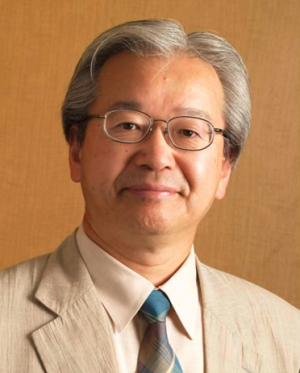Year born: 1943
Research Areas: Radio Astronomy, Infrared Astronomy
"I have started pondering about the conditions that may have allowed the existence of life on Earth, since I observed many organic molecules in dark clouds at the Nobeyama Radio Observatory."
Source: An Interview with New IAU President Norio Kaifu 2012

Early Life
Norio began his career in astronomy in 1966 at the University of Tokyo. He was a student at the Tokyo Astronomical Observatory. Norio was part of a group of researchers who were all studying radio waves from objects in space. Radio waves are a type of light that our eyes and traditional telescopes cannot see. You need to use special telescopes. Through his work, Norio learned how useful it is to view the Universe in many types of light, not just the light our eyes see.
Norio's interest began when water and ammonia were found in space in the 1960s. Water is a compound of hydrogen and oxygen. Ammonia is a compound of nitrogen and hydrogen. A compound contains two or more elements which are bound together. Researchers used new kinds of telescopes to find these compounds. These telescopes looked at light which had a longer wavelength than visible light. The wavelength was ~10 mm, so this type of astronomy is now known as millimetre-wavelength observing. They found the compounds in the space between the stars which we call the interstellar medium.
Career Highlights
Norio studied long wavelengths of light coming from objects in space. Light in this part of the spectrum includes infrared light and radio waves. Many of the objects he observed were beyond our galaxy. Norio spent a lot of his research time spent studying objects with strong magnetic fields. He also studied massive unstable stars which were on the verge of collapse.
Norio was a key part of the work to build new instruments for the Tokyo Astronomical Observatory's 6-metre telescope. He wanted to use these instruments to find faint radio waves from new objects in space. In the 1970s Norio was part of a team who built a millimetre-wave interferometer. An interferometer is what we call a group of telescopes that work together. They are useful because they combine the light collected from a group of telescopes. This lets them act like a much bigger telescope, so they collect more light than each would on its own.
In 1974, he used this new technology to find a new source of methylamine in space. This organic compound had first been found in space in 1937. Organic compounds are interesting to many scientists because they are the basis for all living things on Earth. Finding them in space could be a clue to finding life on another world. However, it is important to know these kinds of chemicals can also be found where there is no life.
In 1979, Norio became a professor and led studies on star formation. In the 1980s he discovered a disk of dense cloud and dust around a forming star. Scientists predict planets will form from the material in this kind of disk over long amounts of time. Thanks to Norio's work, it was the first time one of these protoplanetary disks had seen.
Norio was a leader of astronomy in Japan. He directed the Subaru telescope project from 1999 to 2005. Subaru is Japan's largest telescope with an 8.2 m wide mirror. At the time, Subaru had the largest single main mirror of any telescope in the world. But the Subaru telescope is not in Japan. It is on the US island of Hawaii, one of the best places in the world for astronomy.
Legacy
Norio received many awards. The Nishina Memorial Prize for the development of millimetre-wave astronomy in 1987. The Japan Academy Prize for research on the interstellar medium in 1998. And the Mainichi Book Review Prize in 2012 to name just a few. Norio also had an asteroid named in honour of him.
Other Interests
Norio believed astronomy could help drive development in technology and skills. He was president of the International Astronomical Union from 2012 to 2015. This is a group of thousands of researchers from all over the world who work together to improve astronomy. Norio also inspired interest in astronomy and made it easy to understand for people who did not work in science. He published more than 30 books for children and the public. The books included classic Japanese poetry and Asian mythology.
